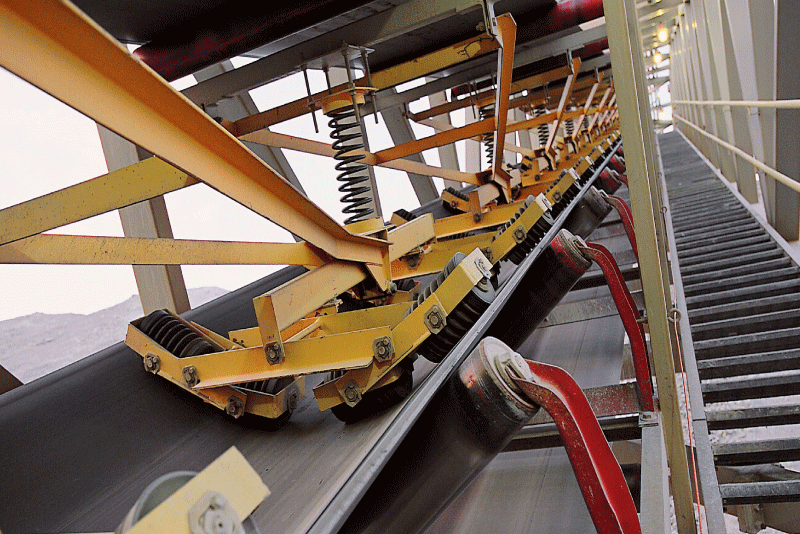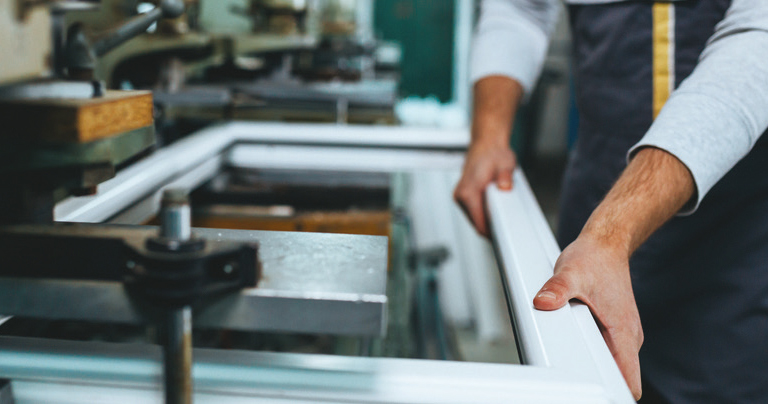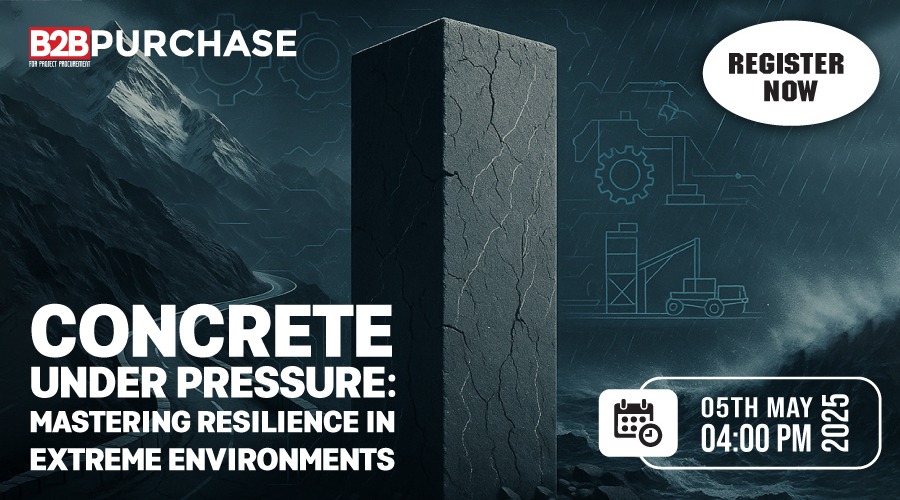Machines that buoy mining efficiency
By Edit Team | April 17, 2019 10:45 am SHARE

Choosing right crusher or screen for right applications makes crushing and screening more cost-effective.
Crushing and screening is an essential part for any mineral processing plant. Stone crushing industry is another important industrial sector in the country. The crushed stone acts as raw material for various construction activities such as the construction of roads, bridges, buildings, canals, etc.
Surging demand
Crushing and screening is an important part of mining and mineral processing industry, as because for processing any mineral, one needs to crush and screen the same. According to Swarbhanu Banerjee, Sales Manager – Surface OE, Komatsu Mining Corp. Group, “Based on recent report, it has been estimated that during 2017-18, India produced mineral worth `1,13,541 crore, i.e. an increase of about 13 per cent over the previous year. This indicates demand for crushing and screening has also increased.”
As the company manufactures crushers majorly for soft to medium hard mineral, its major focus in India is coal crushing. The aggressive expansion plans of Coal India Ltd, the biggest coal producer of India is contributing heavily in the growth of crushing sector in India.
Growth drivers
“Post elections, we expect construction activity to pick up pace significantly as all eyes are on India to maintain its status as the world’s fastest growing major economy. Several schemes introduced by the government will further strengthen the road networks across India. This will boost the aggregate demand for the crushed and screened materials across India,” says Piero Guizzetti, CEO, MB India.
“Elections outcome will dictate the infrastructure policy majorly this year. With outgoing smart city program and new highway projects, government will roll out even better infrastructural policies this year leading to a surge in this sector,” says Ajay Varma, Director, Marsman India Ltd.
Impact of environmental norms
The new directive from Indian Power sector to receive only (-)100 mm coal can be easily achieved by Komatsu’s single stage crusher (feeder breaker) which reduces the shale content thereby, increasing the efficiency of the plant. Fine generation which is the largest contributor to air pollution is reduced substantially by eliminating second stage crushing from the conventional process. The suspended particulate matter due to fines being generated, measured between 3-10 metres from the company’s feeder breaker complies with the environment protection rules.
“Introduction of pipe conveyor to transport coal from mine to power plant will boost the coal crushing industries keeping a check on environmental concerns by reducing coal fine spillage and reducing air pollution. This will give a thrust to in-pit crushing process which currently is used in very few mines in India,” says Banerjee.
In India, there are increasingly strict environmental norms for setting up a static crusher plant, owing to its numerous emissions. So it is a bit of an inhibitor with regards to new static crushing plant set ups. On the demand side, recycling and reuse of demolition material is becoming a norm with government policy. “It is taking a bit to enforce execution, but we will get there and such initiatives will add to the value that MB products bring as recycling can be done directly at site without the need of transportation to and from crushing stations,” says Guizzetti.
“We welcome the environmental norms enforced by government and yes, it has impacted the crushing industry. Lot of crushing sites have been shut down due to their near proximity to residential areas and many crushing companies are not able to renew their licenses due to environmental policies,” says Varma. Large scale miners and operators have been going strong by setting up plants in strategic locations and getting proper environmental licenses.
Major impediments
Coal production is increasing every year and there is a very optimistic growth plan in coal production however, Banerjee states the following challenges faced in this segment:
At present, CIL subsidiaries and SCCL are not purchasing crushers and are subcontracting the crushing along with transportation. The parties those who are getting the order generally procure the machine considering the project duration, which is creating hindrance to introduce high quality and updated crusher in the Indian market.
Another major challenge for crusher manufacturer is introduction of surface miner in surface coal mining sector which eliminates primary crushing as surface miner produces 150/100 mm coal.
Indian coal crushing market is dominated by small capacity (up to 500 TPH) crushers and consultants hesitate to recommend high capacity crusher specially feeder breaker for any high capacity crushing project. Although, globally high capacity feeder breakers up to 4000 TPH are very reliable and well established, because of this globally reputed feeder breaker manufacturers are not able to enter this small crushing segments and India is missing the advantages of high capacity crushers.
The issue with financial institutions’ NPAs has had downstream negative effect when it comes to allocation of funds aimed at financing infrastructure projects, an underlying key driver to kick start major investment in construction going forward, says Guizzetti.
According to Varma, the major challenge is finance for small scale crushing owners. Companies or single owners are having a hard time securing loans for their project and the turnaround time from securing order to getting paid is taking a long time. There is still nervousness in economy and banking system is become more vigilant in recent times in regards to financing.
Operations made cost-efficient
If fine generation is a concern he/she should not recommend a crusher (like impactor) which generates more fines because of the crushing principle, on the other hand if the final requirement of any process is fines (may be -1 mm) then one should recommend crusher which is producing more fines. “By introduction of high crushing ration (10:1) we can reduce 2nd stage crushing which will reduce not only the project cost but also reduce the operating cost for that project and give savings on civil installations. By promoting in-pit crushing and conveying we will make the entire material handling process more cost economy as it will save fuel and reduce pollution. With our High Angle Conveyor (HAC) we will be reducing the total project cost for any opencast project if the depth of mines is more than 80-100m,” says Banerjee.
Except for large stone crushing units, most of the stone crushing units either buy stone from nearby mines or are situated in close proximity of the small mines. These smaller units mostly use a combination of local explosives, mechanical and manual breaking of large stones. The mined stones are then transported to the crusher sites by road.
With MB products, smaller units can get outmost consistency in terms of the size of the output as manual breaking and/or rock breakers can only reach 50-60 per cent of the output at the desired size. Quality of construction is becoming increasingly important hence, quality of raw materials is also correlated.
“When using MB crushing machines as a primary crusher, there is a huge CapEx saving, plus transportation time taken for commissioning, dismantling, etc. of static crushers is eliminated. On the CapEx front, our customers get return on their investment very soon. Last but not least, for captive mines, once the concession is over there is no utility for large scale crushing stations, with MB products the owner can then use the machine for many other applications and/or lease the machine to garner an additional revenue stream,” says Guizzetti.
Automation plays a very important role in cost effectiveness of the plant. Marsman provides its cone crusher, impact crusher and VSI with auto lubrication system which in turn ensures negligible breakdown and produces high productivity leading to better margins. The company is well known for offering crushers with low-capacity motors still delivering desired production capacity thereby reducing electricity costs. Wear and tear is again a major cost where the service team ensures that all customers are kept up to date regarding the service of their crushing plant, says Varma.
It has been estimated that during 2017-18, India produced mineral worth ₹1,13,541 crore; increase of 13 per cent over the previous year.
Swarbhanu Banerjee, Sales Manager – Surface OE, Komatsu Mining Corp. Group
Government schemes will further strengthen road networks across India.
Piero Guizzetti, CEO, MB India
With new programs and projects, government will roll out even better infrastructural policies this year.
Ajay Varma, Director, Marsman India Ltd
Cookie Consent
We use cookies to personalize your experience. By continuing to visit this website you agree to our Terms & Conditions, Privacy Policy and Cookie Policy.




































-20240213125207.png)

























